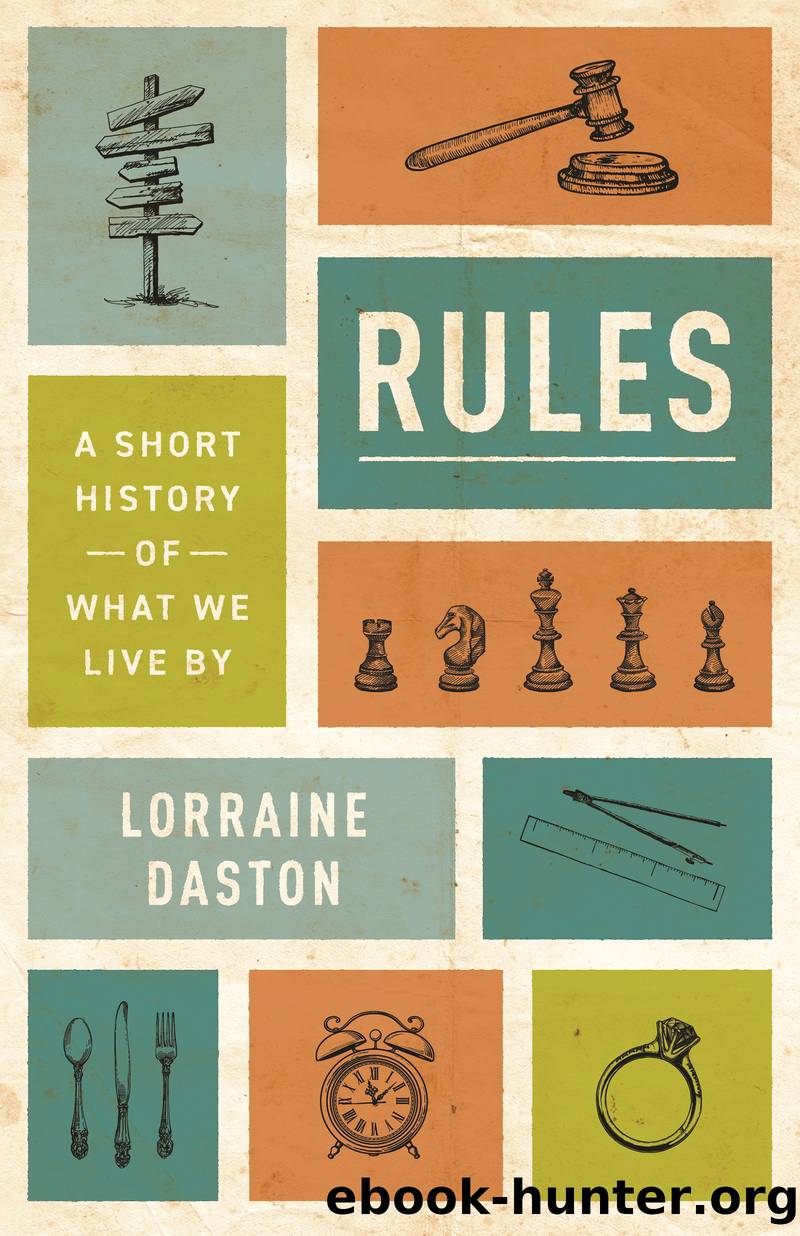Rules by Lorraine Daston

Author:Lorraine Daston
Language: eng
Format: epub
Publisher: Princeton University Press
Published: 2022-03-30T00:00:00+00:00
Conclusion: From Rules to Norms
Regulations are rules at their nitty-grittiest. On the spectrum from the majestic natural laws that order the universe to pinpoint rules applied to pinpoint domains, regulations tilt toward the latter. Just how far depends on the domain: rules of capitalization can apply to an entire language; rules stipulating the maximum length of beaked shoes apply only to beaked shoes. There are global regulations governing, for example, trade and diplomacy, but most regulations are local, where particulars matter. And even global regulations must inevitably be adjusted to local circumstances, if only because enforcement is always ultimately local.
Regulations are therefore a case of multum in parvo: much compressed within a small compass. The scales within which the regulations examined in this chapter operate range from the small city to the metropolis to a linguistic community, and in all three cases regulations pack a multitude of detail into the bounded realms they govern. What is characteristic of times and places where there is an upsurge of regulations is not just size but also complexity and density. More far-flung and tightly woven trade networks created the wealth and wares that drove sumptuary regulations in commercial cities; exploding population and demands on fragile infrastructure drove traffic and sanitation regulations in Enlightenment metropolises; increased literacy and the printing press drove efforts to regularize spelling. Wherever human interactions expanded and intensified at an accelerated pace, regulations cropped up to order the perceived disorder of many people doing many different things in many different ways in the same space, whether at a Bolognese wedding, in a Paris street, or on the pages of a printed book.
At this point, the libertarian in all of us will protest: whatâs wrong with wearing beaked shoes (or ripped jeans), letting carriages (or cars) go as fast as they like, and spelling fox as focks or phawx or all of the above on the same page? (There are probably fewer libertarians in favor of emptying the contents of chamber pots onto the heads of unsuspecting passers-by.) Arenât all of these regulations at root an authoritarian effort to stamp out variety and individuality? It is undeniable that the prologues of many of these rules and regulations often exude a prim and tidy aesthetic: the Saxon authorities who begged fashion to halt, the Parisian authorities who dreamt of uniform house façades all facing the same direction, the German authorities who howled in horror over the âlawlessnessâ of spelling textbooks. One can easily imagine a counter-aesthetic of wardrobe miscellany, mismatched street fronts, and devil-may-care orthographic inconsistency. But beyond aesthetic preferences, hard realities also motivated many regulations: the reality of family fortunes dissipated on frippery, of trying to find oneâs way in a labyrinth of unnumbered, turned-around houses, and of deciphering the words that strange configurations of letters on the page spell out. Not all realities are equally hard. Co-ordinating traffic and sorting out its versus itâs are orders of magnitude apart in terms of their consequences. Yet the latter probably stirs more passions than the former.
Download
This site does not store any files on its server. We only index and link to content provided by other sites. Please contact the content providers to delete copyright contents if any and email us, we'll remove relevant links or contents immediately.
Kathy Andrews Collection by Kathy Andrews(10521)
The remains of the day by Kazuo Ishiguro(7552)
Spare by Prince Harry The Duke of Sussex(4199)
Paper Towns by Green John(4169)
The Body: A Guide for Occupants by Bill Bryson(3802)
Be in a Treehouse by Pete Nelson(3214)
Harry Potter and the Goblet Of Fire by J.K. Rowling(3046)
Goodbye Paradise(2964)
Never by Ken Follett(2884)
Into Thin Air by Jon Krakauer(2703)
The Remains of the Day by Kazuo Ishiguro(2620)
The Genius of Japanese Carpentry by Azby Brown(2609)
The Cellar by Natasha Preston(2595)
Drawing Shortcuts: Developing Quick Drawing Skills Using Today's Technology by Leggitt Jim(2532)
120 Days of Sodom by Marquis de Sade(2439)
Architecture 101 by Nicole Bridge(2351)
The Man Who Died Twice by Richard Osman(2300)
Machine Learning at Scale with H2O by Gregory Keys | David Whiting(2293)
Fairy Tale by Stephen King(2072)
